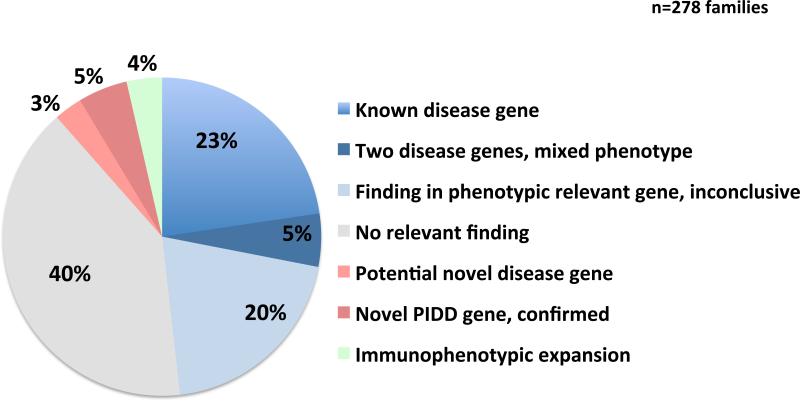Figure 1.
Status of molecular diagnosis after WES of 278 PIDD families. Findings are grouped in categories based on whether the detected disease causing variant(s) a) affects known disease genes, b) are located in more than one gene contributing to the assumed mixed phenotype (PIDD or non-PIDD) in the individual, c) affects a confirmed novel disease gene d) affects a potentially novel PIDD gene, e) leads to immunophenotypic expansion: a modified immune phenotype observed in the affected individual, modified from that which is historically characteristic of the particular gene, f) affects a phenotypic relevant gene, that were not presumably the major disease etiology, or only one deleterious variant in a disease relevant AR gene (in total 57 cases), or g) no identifiable molecular explanation was identified using the technologies applied here (111 cases).

